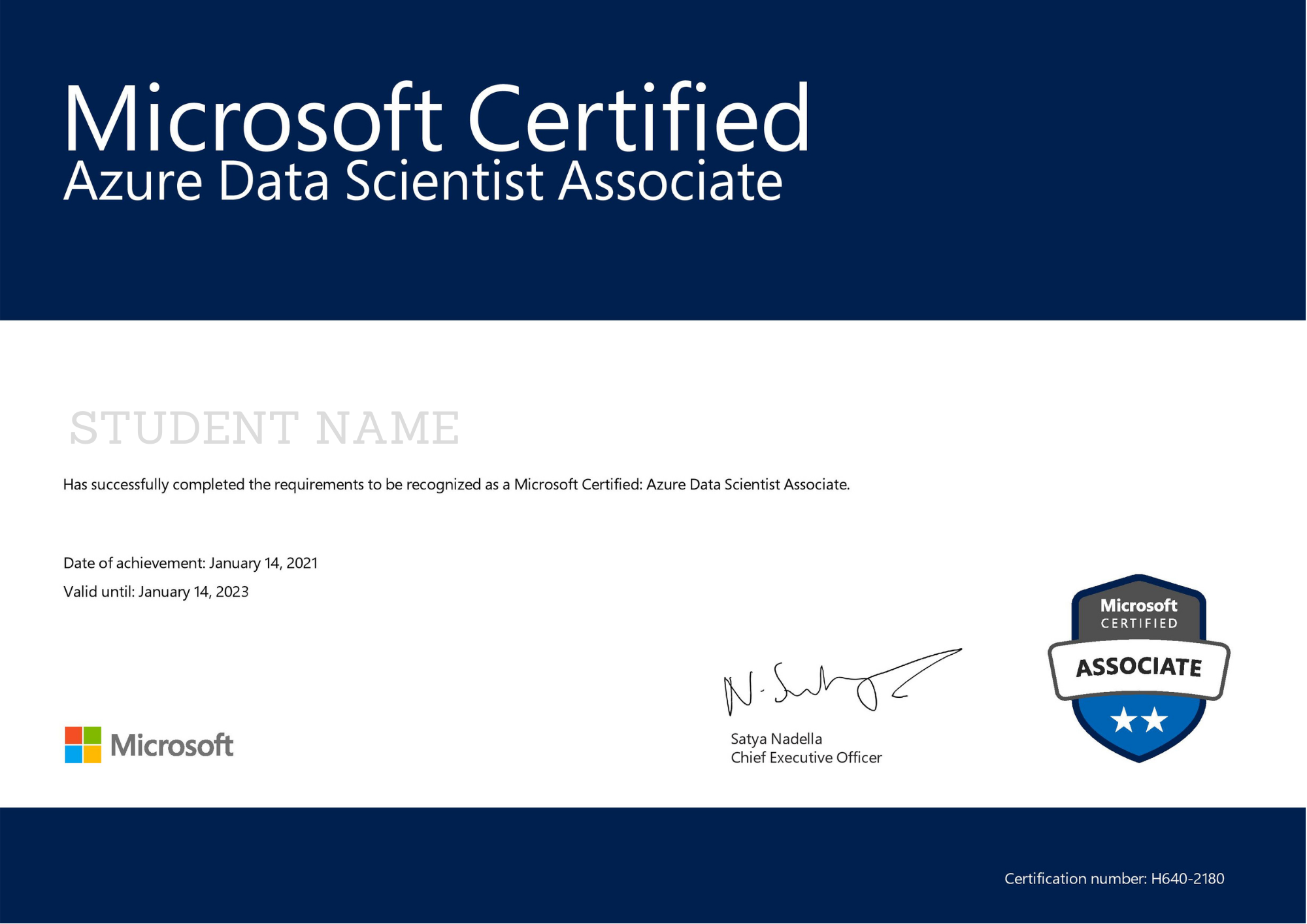





Syllabus
INTRODUCTION TO PYTHON
Build a foundation for the most in-demand programming language of the 21st century.
- Understanding the Jupyter Anconda,Coding Console
- Data Structures in Python
- Control Structure and Functions
PYTHON FOR DATA SCIENCE
Learn how to manipulate datasets in Python using Pandas which is the most powerful library for data preparation and analysis.
- Introduction to NumPy
- Operations on NumPy Arrays
- Introduction to Pandas Getting and Cleaning Data
VISUALIZATION IN PYTHON
Humans are visual learners and hence no task related to data is complete without visualisation. Learn to plot and interpret various graphs in Python and observe how they make data analysis and drawing insights easier.
- Introduction to Data Visualization
- Basics of Visualization: Plots, Subplots and their Functionalities Plotting Data Distributions Plotting Categorical and Time-Series Data
EXPLORATORY DATA ANALYSIS
Learn how to find and analyze the patterns in the data to draw actionable insights.
- Data Sourcing
- Data Cleaning
- Univariate Analysis
- Segmented Univariate
- Bivariate Analysis
- Derived Metrics
R Programming:
a) Reading and Getting Data into R
b) Data Objects-Data Types & Data Structure.
c) Viewing Named Objects, Structure of Data Items, Manipulating and Processing Data in R (Creating, Accessing, Sorting data frames, Extracting, Combining, Merging, reshaping data frames)
d) Control Structures, Functions in R (numeric, character, statistical)
e) working with objects, Viewing Objects within Objects, Constructing Data Objects, Packages – Tidyverse, Dplyr, Tidyr etc., Queuing Theory,
f) Non parametric Tests- ANOVA, chi-Square, t-Test, U-Test
g) Interactive reporting with R markdown
INVESTMENT ASSIGNMENT
Learners will fill in the shoes of an analyst at an investment bank and determine where the firm should invest. They will then have to explain their recommendations in lieu of the analysis conducted
- Problem Statement
- Evaluation Rubric
- Final Submission
- Solution
INFERENTIAL STATISTICS
Build a strong statistical foundation and learn how to ‘infer’ insights from a huge population using a small sample.
- Basics of Probability
- Discrete Probability Distributions
- Continuous Probability Distributions
- Central Limit Theorem
HYPOTHESIS TESTING
Understand how to formulate and validate hypotheses for a population to solve real-life business problems.
- Concepts of Hypothesis Testing - I: Null and Alternate Hypothesis, Making a Decision, and Critical Value Method.
- Concepts of Hypothesis Testing - II: p-Value Method and Types of Errors
- Industry Demonstration of Hypothesis Testing: Two-Sample Mean and Proportion Test, A/B Testing.
LINEAR REGRESSION
Venture into the machine learning community by learning how one variable can be predicted using several other variables through a housing dataset where you will predict the prices of houses based on various factors.
- Introduction to Simple Linear Regression
- Simple Linear Regression in Python
- Multiple Linear Regression
- Multiple Linear Regression in Python
- Industry Relevance of Linear Regression
LOGISTIC REGRESSION
Learn your first binary classification technique by determining which customers of a telecom operator are likely to churn versus who are not to help the business retain customers.
- Univariate Logistic Regression
- Multivariate Logistic Regression - Model Building
- Multivariate Logistic Regression - Model Evaluation
- Logistic Regression - Industry Applications
NAIVE BAYES
Understand the basic building blocks of Naive Bayes and learn how to build an SMS Spam Ham Classifier using Naive Bayes technique.
- Bayes Theorem and Its Building Blocks
- Naive Bayes For Categorical Data
- Naive Bayes for Text Classification
MODEL SELECTION
Learn the pros and cons of simple and complex models and the different methods for quantifying model complexity, along with regularisation and cross validation.
- Principles of Model Selection
- Model Evaluation
SUPPORT VECTOR MACHINE (OPTIONAL)
Learn how to find a maximal marginal classifier using SVM, and use them to detect spam emails, recognize alphabets and more!
- SVM - Maximal Margin Classifier
- SVM - Soft Margin Classifier
- Kernels
TREE MODELS
Learn how the human decision-making process can be replicated using a decision tree and other powerful ensemble algorithms.
- Introduction to Decision Trees
- Algorithms for Decision Tree
- Construction Truncation and Pruning
- Random Forests
BOOSTING
Learn how weak learners can be ‘boosted’ with the help of each other and become strong learners using different boosting algorithms such as Adaboost, GBM, and XGBoost.
- Introduction to Boosting and AdaBoost
- Gradient Boosting
UNSUPERVISED LEARNING: CLUSTERING
Learn how to group elements into different clusters when you don’t have any pre-defined labels to segregate them through K-means clustering, hierarchical clustering, and more.
- Introduction to Clustering
- K Means Clustering
- Executing K Means in Python
- Hierarchical Clustering
- Other Forms of Clustering
TELECOM CHURN CASE STUDY
Solve the most crucial business problem for a leading telecom operator in India and southeast Asia - predicting customer churn
- Problem Statement
- Evaluation
- Rubric
- Final Submission
- Solution
LEXICAL PROCESSING
Do you get annoyed by the constant spams in your mail box? Wouldn’t it be nice if we had a program to check your spellings? In this module learn how to build a spell checker & spam detector using techniques like phonetic hashing, bag-of-words, TF-IDF, etc.
- Introduction to NLP
- Basic Lexical Processing
- Advanced Lexical Processing
SYNTACTIC PROCESSING
Learn how to analyze the syntax or the grammatical structure of sentences with the help of algorithms & techniques like HMMs, Viterbi Algorithm, Named Entity Recognition (NER), etc.
- Introduction to Syntactic Processing
- Parsing
- Information Extraction
- Conditional Random Fields
SYNTACTIC PROCESSING -ASSIGNMENT
Build a POS tagger for tagging unknown words using HMMs and modified Viterbi algorithm
- Problem Statement
- Evaluation
- Rubric
- Final Submission
- Solution
SEMANTIC PROCESSING
Learn the most interesting area in the field of NLP and understand different techniques like word-embeddings, LSA, topic modeling to build an application that extracts opinions about socially relevant issues (such as demonetization) on social media platforms.
- Introduction to Semantic Processing
- Distributional Semantics Topic Modelling
- Social Media Opinion Mining
- Semantic Processing
- Case Study
BUILDING CHATBOTS WITH RASA
Imagine if you could make restaurant booking without opening Zomato. Build your own restaurant-search chatbot with the help of RASA - an open source framework and deploy it on Slack.
- Problem Statement
- Evaluation
- Rubric
- Final Submission
- Solution
INTRODUCTION TO NEURAL NETWORKS
Learn the most sophisticated and cutting-edge technique in machine learning - Artificial Neural Networks or ANNs.
- Structure of Neural Networks
- Feed Forward in Neural Networks
- Backpropagation in Neural Networks
- Modifications to Neural Networks
- Hyperparameter Tuning in Neural Networks
NEURAL NETWORKS - ASSIGNMENT
Build a neural network from scratch in Numpy to identify the type of skin cancer from images.
- Problem Statement
- Evaluation
- Rubric
- Final Submission
- Solution
CONVOLUTIONAL NEURAL NETWORKS -INDUSTRY APPLICATIONS
Learn the basics of CNN and OpenCV and apply it to Computer Vision tasks like detecting anomalies in chest X-Ray scans, vehicle detection to count and categorise them to help the government ascertain the width and strength of the road.
- Building CNNs with Python and Keras
- CNN Architectures and Transfer Learing
- Style Transfer and Object Detection Industry
- Demo:Using CNNs with Flowers Images Industry
- Demo:Using CNNs with X-ray Images
CREATE MACHINE LEARNING MODELS
CREATE MACHINE LEARNING MODELS
- Explore and analyze data with Python
- Train and evaluate machine learning models
- Train and evaluate regression models
- Train and evaluate classification models
- Train and evaluate clustering models
- Train and evaluate deep learning models
CREATE NO-CODE PREDICTIVE MODELS WITH AZURE MACHINE LEARNING
- Use Automated machine learning in Azure Machine Learning
- Creating a regression model with Azure Machine Learning designer
- Creating a classification model with Azure Machine Learning designer
- Creating a clustering model with Azure Machine Learning designer
BUILD AI SOLUTIONS WITH AZURE MACHINE LEARNING
- Introduction to Azure machine learning SDK
- Train a machine learning model with Azure Machine Learning
- Work with Data in Azure Machine Learning
- Work with Compute in Azure Machine Learning
- Orchestrate machine learning with pipelines
- Deploy real-time machine learning services with Azure Machine Learning
- Deploy batch inference pipelines with Azure Machine Learning
- Tune hyper parameters with Azure Machine Learning
- Automate machine learning model selection with Azure Machine Learning
- Explore differential privacy
- Explain machine learning models with azure machine learning
- Detect and mitigate unfairness in models with azure machine learning
- Monitor models with azure machine learning
- Monitor data drift with azure machine learning.
Evaluate text with Azure Cognitive Language Services
- Classify and moderate text with Azure Content Moderator
- Add conversational intelligence to your apps by using Language Understanding Intelligent Service (LUIS)
- Discover sentiment in text with Text Analytics API
Process and Translate Speech with Azure Cognitive Speech Services
- Transcribe speech input to text
- Synthesize Text Input to Speech
- Translate speech with the speech service
Create Intelligent Bots with the Azure Bot Service
- Build a bot with QnA Maker and Azure Bot Service
Process and classify images with the Azure cognitive vision services
- Identify faces and expressions by using the Computer Vision API in Azure cognitive services
- Process images with the computer vision service
- Classify images with the Microsoft Custom Vision Service
- Evaluate the requirements for implementing the custom vision APIs
- Extract insights from videos with the Video indexer service
platforms covered

Python
This is one of the most dominant languages for data science in the industry today because of its ease, flexibility, open-source nature. It has gained rapid popularity and acceptance in the ML community.

Scikit learn
Simple and efficient tools for predictive data analysis. It features various Classification, Regression and clustering algorithms .

TensorFlow
It is easily the most widely used tool in the industry today. Google might have something to do with that!

PyTorch
This super flexible deep learning framework is giving major competition to TensorFlow. PyTorch has recently come into the limelight and was developed by researchers at Facebook

Azure Machine Learning
It is a platform for operating machine learning workloads in the cloud. Azure Machine Learning enables you to manage:
- Scalable on-demand compute for machine learning workloads.
- Data storage and connectivity to ingest data from a wide range sources.
- Machine learning workflow orchestration to automate model training, deployment, and management processes.
- Model registration and management, so you can track multiple versions of models and the data on which they were trained.
- Metrics and monitoring for training experiments, datasets, and published services.
- Model deployment for real-time and batch inferencing
Certifications
Executive Program in Artificial Intelligence, Deep learning & Data Science certified by Microsoft.

Certification by Vepsun

Certification by Microsoft

Certification by Microsoft
Happy Clients Our success is Measured by Results.
Projects- Our focus in on Delivering a better content.
Years of experience In Imparting Quality Training across Verticals.
Students Placed in Top MNC's
Vepsun Career Assist
WHAT IS CAREER ASSIST?
Career Assist is an integration between Vepsun Technologies and hirist.com to provide career assistance to improve the job search experience & bring you closer to your desired job. With Career Assist, you get a chance to put the gained knowledge towards creating a positive, lifelong impact and move forward into the future with a great deal of opportunities in the area of your interest.
As a part of Career Assist, you will get the Spotlight & Pro-Features for a time period of 6 months. This upgrade on your profile will not only improve your job search experience but also give you multiple benefits like Spotlight and Pro Features.
Testimonials

Pankaj Singh
Learning is very good here. Trainers are very good for Azure and Aws. Completed my Aws & Azure Training.

Harish Pandey
I have completed my AZURE technologies.Training session was good. Thanks to my trainer. Thanks Vepsun Team.

Ankit Singh
Best institute offering a AWS & Azure course within this good cost. Trainer was always ready to clear our doubt and support us. Also they have a good student coordinator.

Nishant Sinha
Enrolled here for the course of Linux, trainers are highly qualified with great experience, staffs were quite helpful Kavita and Alka.

Shiva Reddy
Artifical Training content was very helpfull for me to get the job. Teaching and explanation was very good.Good experience overall.
Program Fee
Executive Program in Artificial Intelligence, Deep learning & Data Science
INR. 31,990*
*Inclusive of all Taxes
- Training
- Single Certification
- Online - live Classes
- No Cost EMI Available
Executive Program in Artificial Intelligence, Deep learning & Data Science
*INR. 49,990
*Inclusive of all Taxes
- Training
- 3 Certification
- Online - live Classes
- No Cost EMI Available
EMI Calculator
Documents required for the EMI Process
| Documents | Description |
|---|---|
| Photo | Photo Scanned or Taken by Phone |
| Pan | Scanned or Photo |
| Address Proof ( Any 2) | Aadhar/ Voter ID/ Passport/ DL/ Water Bill/ Piped Gas Bill/ Electricity/ Rent Agreement Franked |
| NACH ( Any 1) | Canceled Cheque/ Bank Statement First Page/ Passbook first page |
| Bank statements ( Any 1) | Salaried - (3 Months), Self Employed (6 months) |
| Income Proof (Any1) | Salaried - Latest Salary Slip, Self Employed - Company Incorporation proof / ITR |
Web : https://eduvanz.com/
Contact Us

We offer most advanced technologies than any other computer and business training company. Businesses and individuals can choose from the course offerings, delivered by experts.
Soul Space Paradigm, 3rd Floor, West Wing, next to Hotel Radisson Blu, Marathahalli, Bengaluru, Karnataka 560037
+91 90-363-63007
+91 90-353-53007










